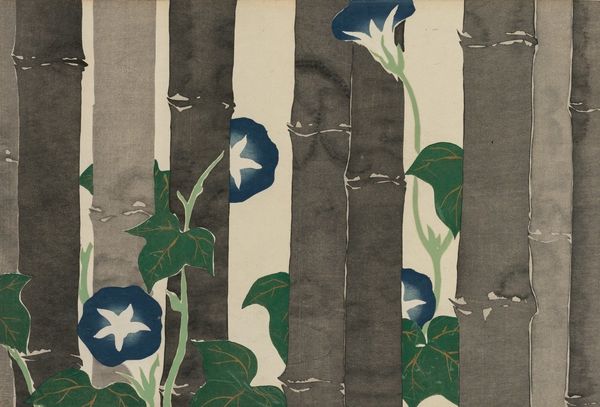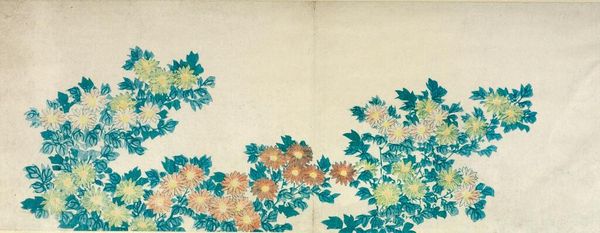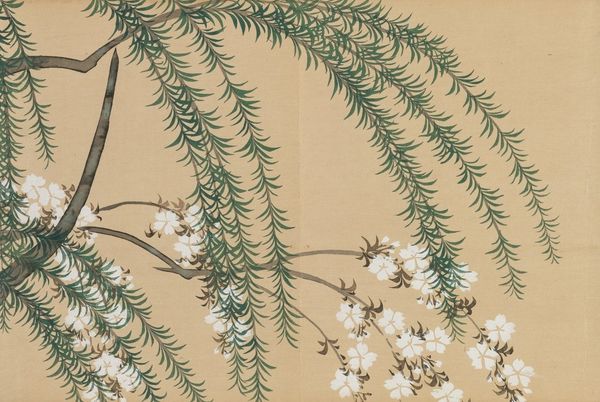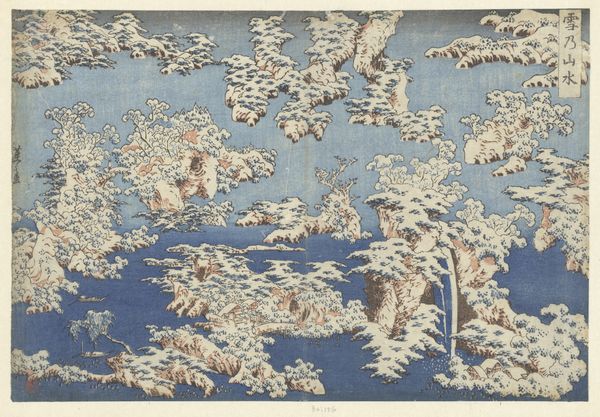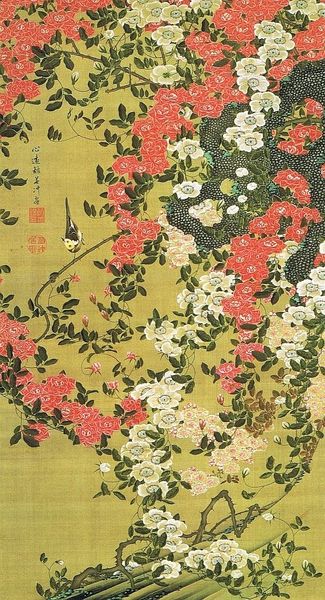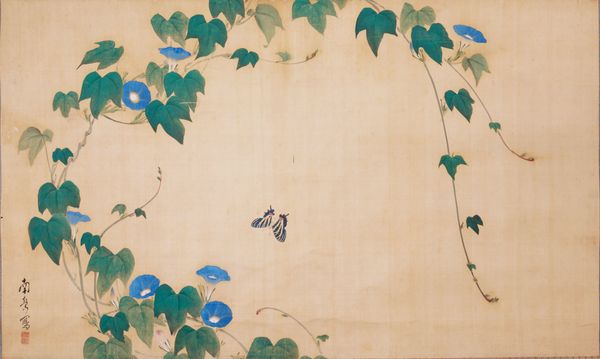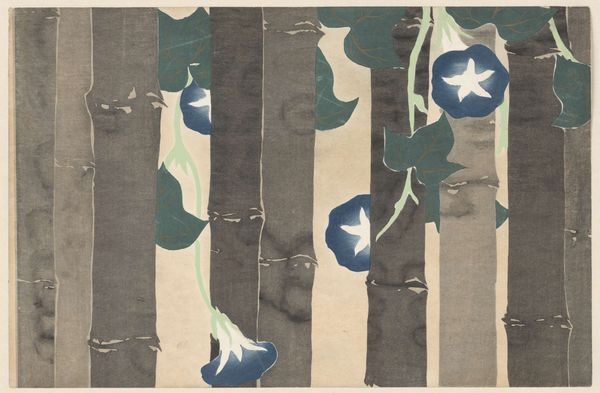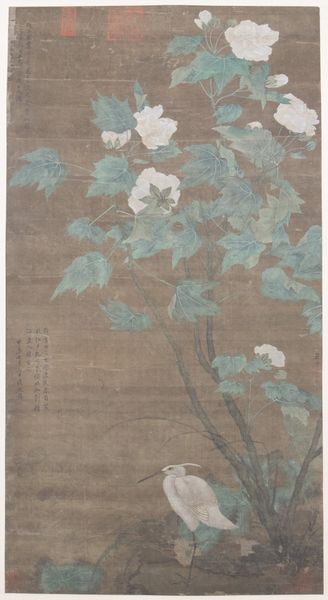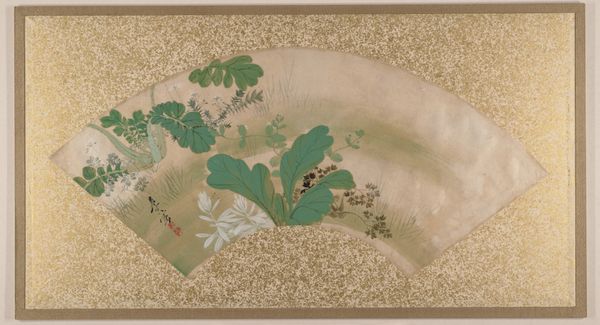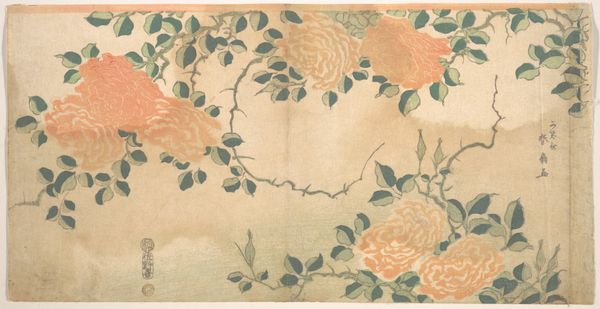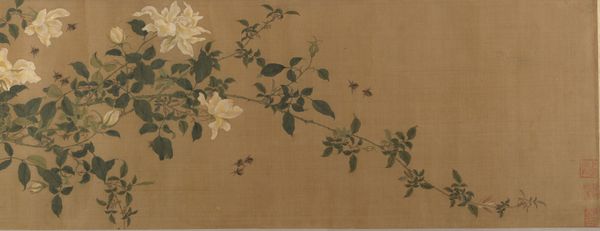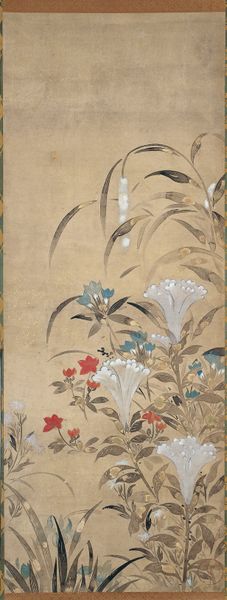
painting
#
painting
#
pattern
#
asian-art
#
landscape
Copyright: Public Domain: Artvee
Curator: I'm immediately drawn to the simplified yet powerful arrangement of these hanging blue blossoms—almost heavy with the promise of fragrance. What a gorgeous design! Editor: Indeed. This painting is called "Wisteria," dating from 1909 to 1910 by Kamisaka Sekka, showcasing a striking arrangement of colors in the style of traditional Asian art. Curator: Considering Sekka’s background, its position within the cultural shifts happening at the time becomes more clear. Japan was at a crossroads grappling with Westernization, and Sekka, among others, were actively looking to revitalize Japanese artistic identity. The emphasis on traditional aesthetics through print and design elevated "craft" to fine art status. Editor: It’s not merely aesthetic. I agree that the piece resists Westernization. Yet beyond an expression of identity, how does it interact with societal hierarchies or power dynamics of the time? What specific labor went into producing this piece, and how was Sekka positioned relative to other artisans or producers? Curator: A valid consideration! During the Meiji era, there was an explicit interest in national branding that leaned on idealized representations of nature—of women, of tradition. So you can’t consider this imagery outside the context of power—what is allowed to be seen, what gets deemed traditionally "Japanese." Editor: The pattern is very beautiful—clearly a deliberate design. So tell me more about that! Is it a painting on paper? Curator: Indeed, Sekka experimented with printing techniques. These allowed for a flattened, patterned surface that diverges quite strongly from conventional three-dimensional Western painting practices. The tension of these surfaces creates unique possibilities and challenges—but they’re choices deeply influenced by the cultural pressures I was discussing. Editor: Thanks! By using specific materials and applying a decorative treatment, the artist engaged both social expectation and aesthetic desire. Curator: So, perhaps Sekka's intention was to push back against the rigid definition of roles during an era of great cultural shift! I have to say, considering how many interpretations this artwork lends itself to, it remains stunning in both impact and execution. Editor: Absolutely. We can appreciate its visual impact today, but equally assess the modes and methods through which this visual statement came to exist!
Comments
No comments
Be the first to comment and join the conversation on the ultimate creative platform.
